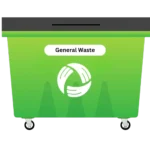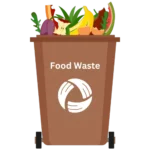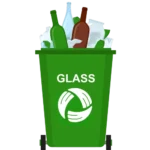Restaurant waste collection
Get the best deal on restaurant waste collections today
Just enter your postcode…
Get the best deal on restaurant waste collections today
Just enter your postcode…
Start saving now
Finding your restaurant’s right waste collection service can be challenging, but we’re here to help. Our service connects you with trusted providers, ensuring you get tailored solutions for your needs. Here’s how we can assist:
💡To simplify the process further, check out our how to develop a restaurant waste management plan guide.

We’ll match you with providers offering competitive rates and flexible services to help you cut costs without compromising reliability.

Our partners manage a wide range of waste types, including food waste, packaging, cooking oil and glass, ensuring compliant and efficient disposal.

We only work with providers known for their excellent customer service and reliable waste collection so you can focus on running your restaurant.
Getting started with our restaurant waste collection service is quick and hassle-free. Here’s how it works:

Tell us the type and amount of waste your restaurant generates so that we can tailor your quote.

We’ll search for trusted waste collection providers in your area to find you the best deal.

Our waste experts will work with your commercial waste provider to arrange a seamless waste collection schedule.

With a reliable collection service in place, you can focus on running your restaurant while your commercial waste is taken care of.
Restaurants generate various types of commercial waste that require proper management. Here’s a breakdown of the most common waste types:

Food waste arises from perishable ingredients and uneaten meals. Most UK restaurants must arrange a dedicated commercial food waste collection. For more information, visit our guide to commercial food waste recycling obligations.

Commercial cardboard waste includes materials like cardboard boxes commonly used for bulk ingredient purchases and deliveries. Proper recycling of cardboard helps reduce landfill waste.

Dry mixed recycling includes recyclable items such as aluminium cans, plastic bottles, paper, and certain types of plastic packaging. These materials can be placed in a single bin and sorted at recycling facilities.

Commercial glass waste comes from beverage bottles, broken glassware, and jars. This type of waste is common in both front-of-house and kitchen operations.

Sanitary waste includes hygiene products disposed of in restroom bins. Proper sanitary bins are essential to maintain hygiene and prevent odours.

General waste includes non-recyclable and contaminated materials such as mixed packaging, used napkins, waxed cups, and plastic cutlery.
Restaurant waste management relies on having the right types of commercial bins to handle specific waste streams effectively. Here’s a breakdown of the essential bin types and what they collect:

Handles non-recyclable materials such as food wrappers, contaminated paper products, waxed cups, and plastic cutlery. This bin is essential for waste that cannot be composted or recycled.

Used for materials that can be recycled, including cardboard, clean plastics, aluminium cans, and paper. This bin ensures recyclable waste is kept separate and sent to the appropriate processing facilities.

Designed for food waste such as food scraps, coffee grounds, fruit peels, and spoiled ingredients. These bins are crucial for restaurants that are required to separate food waste for commercial recycling or general waste.

Used to collect used cooking oil and grease from frying and other cooking processes. Proper disposal through this container allows the oil to be recycled into biodiesel or other useful products. Learn more about proper disposal in our how to dispose of waste cooking oil page.

Exclusively for glass waste such as bottles, jars, and broken glassware. Glass recycling plays a vital role in the circular economy, as it can be endlessly recycled into new products without losing its quality or purity.
Our restaurant waste collection services cover all locations across the UK. Here are six major cities where we provide expert support:

Our London commercial waste collection service helps restaurants manage food waste, packaging, glass, and general waste effectively. We work across the city to ensure your business stays compliant.

With Manchester commercial waste collection, we provide restaurants with reliable solutions for food waste, recycling, and general rubbish. From the city centre to the Northern Quarter, we help businesses manage waste efficiently.

Birmingham commercial waste collection offers tailored services for restaurants managing food scraps, glass, and packaging waste. We provide cost-effective options to support businesses in meeting waste management regulations.

Our Glasgow commercial waste collection service specialises in handling food waste, glass recycling, and general waste for restaurants. We ensure compliance with strict waste regulations in Scotland.

Leeds commercial waste collection provides restaurants with effective management of food waste, glass, and recyclable materials. We offer solutions tailored to your business needs from Headingley to the city centre.

With Bristol commercial waste collection, we help restaurants handle food waste, packaging, and general rubbish. Our services support compliance in key areas like Clifton and the Harbourside